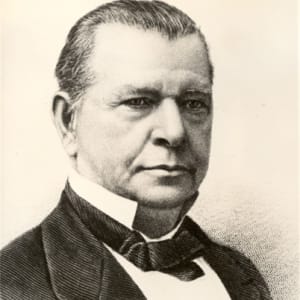Let’s take a light-hearted peep into the story of the airgun. Where did it begin? Where did it come from? Who was involved in its creation?
Lung Power
In the Middle Ages, firearms were making their debut appearance on the world’s stage. Black powder was invented by the Chinese in the 10th century, and over the next couple of hundred years, it was introduced to the rest of the trading world. But long before these very first firearms sputtered into History’s war scenes, early air-powered weapons were being used for hunting.
The blowgun (blowpipe) propelled a projectile using the power of air. So they were, in the most basic sense, air-powered weapons. Not sure you’d bring down a bear with a blowgun, though – or live to try again, for that matter.
Early Mechanical Airguns
The contemporary definition of airgun is “a gun which fires pellets using compressed air or other gases”. A blowgun uses fast-moving gas (CO2), but not compressed gas. So, let’s move forward to the first guns that fit the modern definition of airgun.
Sweden’s Livrustkammaren (Royal Armoury) museum, in Stockholm, houses a very special exhibit. It’s a bellows airgun dating back to 1580 – an artefact recognised by historians as the oldest existing mechanical airgun. Developments over the following couple of centuries resulted in some powerful weapons in calibres up to .50, with velocities as high as 1,000 FPS.
The best-known example of an 18th century airgun is the Girandoni – also known as Windbüchse (‘wind rifle’) – developed by gunsmith and mechanic Bartholomaus Girandoni. This rifle, the world’s first PCP airgun, was famously used by Captain Meriwether Lewis and Second Lieutenant William Clark on their US mapping expedition in the years 1804 to 1806. Native Americans were very impressed by the “smokeless bolt of thunder” that Lewis and Clark were keen to show off.
Although powerful, the Girandoni was hard work. It took nearly 1,500 strokes of a hand pump to fill the air reservoir! But nevertheless, these new airguns had several advantages over their live-fire counterparts: they were smokeless; there was no muzzle flash; they were quieter; they could be fired in wet weather; and each shot took less time to prepare.
Turbulent Evolution of a Spring-Action Side-Lever

The Volitional Repeater was a rifle patented in 1849 by an American mechanic and prolific inventor called Walter Hunt (1796-1859), whose inventions included the ice plough, the lockstitch sewing machine, and the safety pin. Hunt’s Volitional Repeater featured a tubular magazine that was housed under the barrel, and cartridges were raised into the chamber via a lever mechanism. Mr Hunt sold the rights of his invention to manufacturer George Arrowsmith, and one of Arrowsmith’s employees, Lewis Jennings, worked on improving the design of the rifle’s lever mechanism.
The Jennings Magazine Rifle was manufactured by The Robbins and Lawrence Armory and Machine Shop in Vermont, but after three years, production ceased, and investors suffered heavy losses.
Horace Smith and Daniel Wesson – two employees of Robbins and Lawrence – made further developments on Jennings’ design, and began manufacturing the Volcanic, a lever-action, magazine-fed pistol. Just a year later, in 1855, the Smith & Wesson company became the Volcanic Repeating Arms Company, benefitting from investment by Oliver Winchester. Not long after all the patents and assets were passed to the Volcanic Repeating Arms Company, Messrs Smith and Wesson left.
It didn’t take long for the Volcanic Repeating Arms Company to fail, and all assets were sold to Oliver Winchester.
Carbonic Gas
The first airgun powered by carbon dioxide (which used to be called carbonic gas) was a pistol designed and built in the 1870s by a Frenchman called Paul Giffard. The pistol wasn’t a success, because the gas cylinder had to be sent back to the factory every time you needed a refill.
Development of CO2 guns was slow, but by the 1930s, manufacturers were using 8g soda-syphon bulbs, which were filled with liquid CO2. Two decades later, in 1954, Crosman produced the Powerlet, a 12g CO2 bulb, which is still the power source of CO2 guns today.
Recreation

In England in the 1890s, air rifles were proving very useful for poaching, thanks to minimal muzzle report. But theft wasn’t all they were being used for. In Birmingham, particularly, there was a growing trend for competitive target shooting. Matches between public house teams would be played out for prizes that were paid for by the losing team.
At the 1984 Los Angeles Olympic Games, air rifle events for men and women made their Olympic debut, and they have featured ever since. At the following Olympic Games, in Seoul, air pistol events were introduced, and they, too, have continued.
During the 20th century, airgun target shooting grew in popularity, and now, almost a fifth of the way through the 21st century, the sport has never been enjoyed by so many people.
Target shooting is an inclusive sport, accessible to all ages, both sexes, and to those with physical disabilities. A hundred years ago, shooting was a pastime for only the wealthy. But today there is opportunity for everyone.

